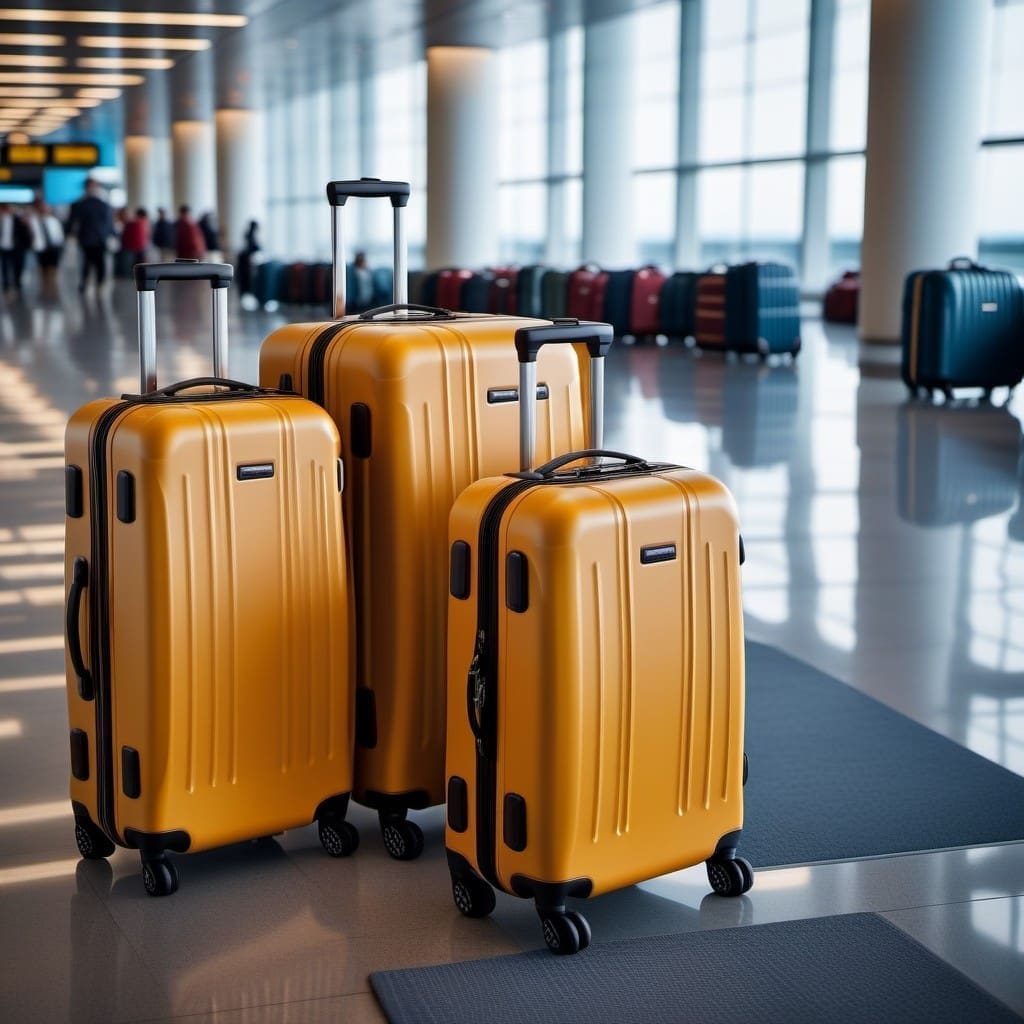When it comes to decoding airline regulations for checked luggage, think of it as unraveling a complex puzzle with pieces that constantly shift.
Understanding the rules for checked bags is essential for a seamless travel experience, but have you ever wondered about the lesser-known regulations that could impact your journey?
Stay tuned to discover key insights that could make all the difference between a stress-free trip and a logistic nightmare.
Key Takeaways
- Follow airline size limits to avoid extra fees and delays.
- Stay within weight restrictions to prevent additional charges.
- Understand prohibited items to comply with safety regulations.
- Check baggage policies for cost, size, and weight specifics.
Airline Regulations For Checked Luggage
When traveling by air, you must adhere to specific airline policies regarding the size of your checked luggage. Most airlines enforce a maximum size limit for checked bags, typically around 62 linear inches, which is the total of height, width, and depth. Exceeding this size limit may result in additional fees for oversize bags.
It’s important to be aware of the individual airline’s requirements as variations exist in size and weight limits for checked luggage. Failure to comply with these airline policies could lead to issues such as having to pay extra charges or facing delays at the airport.
To avoid any potential problems, make sure your checked luggage meets the size restrictions set by the airline you’re flying with. By understanding and following these guidelines, you can guarantee a smoother travel experience without incurring any unexpected costs or complications.
Weight Limit for Checked Luggage
To make sure you comply with airline regulations for checked luggage and avoid extra fees, understanding the weight limit for checked luggage is essential before your flight. Most airlines typically set the weight limit for checked baggage around 50 pounds. However, it’s important to remember that some airlines might have varying weight limits depending on the route, class of service, or fare type you have booked. Exceeding the weight limit can result in additional fees or charges, so it’s wise to pack within the specified limits.
To ensure smooth handling and compliance with airline regulations for checked luggage, always check with your specific airline for their exact weight restrictions for checked baggage. Here is a table summarizing key points about the weight limit for checked luggage:
| Aspects | Details |
|---|---|
| Weight Limit | Around 50 pounds on most airlines |
| Variability | May differ based on route, class, or fare type |
| Consequences | Excess weight could lead to additional fees or charges |
Standard Dimensions for Checked Bags
Understanding the standard dimensions for checked bags is crucial for ensuring seamless travel and avoiding additional fees or complications at check-in and boarding. Most airlines have size restrictions that typically fall within a maximum total of 62 linear inches (height + width + depth) for checked bags. These limitations are in place to guarantee that bags can fit efficiently in the aircraft’s cargo hold.
Exceeding the maximum dimensions may lead to additional fees or categorization as oversized bags, which could result in extra charges. It’s important to adhere to the specific linear inches limit set by each airline to prevent delays and issues during the travel process.
Prohibited Items in Checked Luggage
Before packing your checked luggage, be aware of the prohibited items to guarantee compliance with airline regulations for checked luggage and avoid potential delays or confiscations at security checkpoints.
Some items you shouldn’t include in your checked baggage are:
- Firearms: It’s strictly forbidden to pack firearms in your checked luggage.
- Explosives: Any type of explosive material isn’t permitted in checked bags.
- Flammable items: Items that are flammable pose a risk and shouldn’t be packed in your checked luggage.
- Lithium ion batteries: These batteries are known to be hazardous and shouldn’t be in your checked baggage.
- Arc lighters, plasma lighters: Lighters that use an electric arc aren’t allowed in checked bags due to safety concerns.
Cost of Checked Baggage
When planning your trip, consider the cost of checked baggage as it varies depending on factors such as airline, fare class, and loyalty status. Airlines like American and Delta adjust checked baggage allowances, sizes, and weights based on fare type, destination, and membership status. For example, Delta Airlines offers a free first checked bag benefit with the Delta SkyMiles Amex Card or Medallion Status for eligible passengers. On the other hand, Frontier Airlines has varying checked baggage policies including allowances, fees, and weight limits depending on fare class, route, and passenger status.
| Airline | Fees for Checked Bags | Weight Allowances | Size Restrictions |
|---|---|---|---|
| American Airlines | Varies | Based on fare | Yes |
| Delta Airlines | Free with SkyMiles Amex | 50 lbs per bag | Yes |
| Frontier Airlines | Varies | Based on fare | Yes |
Understanding the cost implications of checked bags can help you budget for your trip effectively and avoid surprises at the airport.
Conclusion
To sum up, make sure to review your airline’s regulations for checked luggage before your next trip. Following these guidelines is as important as wearing your seatbelt on a rollercoaster – it guarantees a smooth and safe journey for you and your belongings.
Happy travels!














